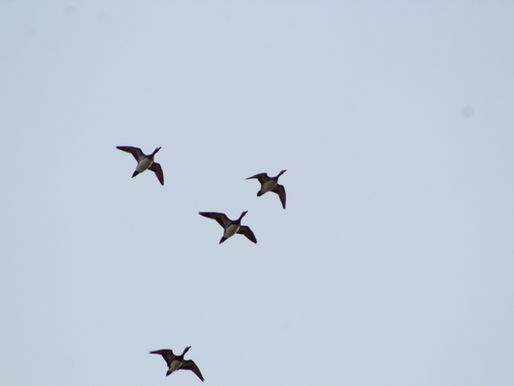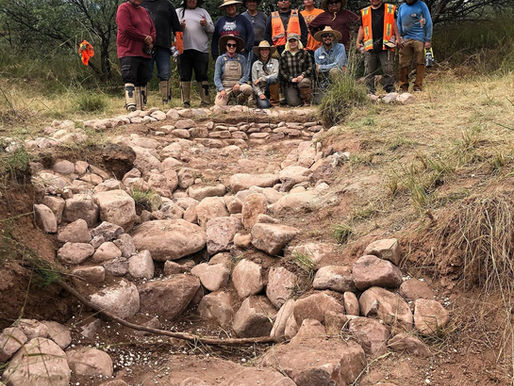top of page

Blog
Search


Leave a Lasting Legacy with Planned Giving
Leaving a gift in your will, estate plans, or even donating retirement assets are wonderful ways to keep your love for the borderlands...
Laura Wenzel
Aug 112 min read


El uso del lenguaje de señas en la observación de aves fomenta la inclusión en el CURSO DE CAMPO EN ZONAS FRONTERIZAS
To read the English version, click here . Las aves me han acompañado en mi día a día desde hace más de 5 años. Mientras me desarrollo...
Ivanna Tautimez
Aug 114 min read


Using sign language in birding fosters inclusion at the Borderlands Field Course
Para leer la versión en español, haga clic aquí . Birds have been a huge part of my daily life for more than 5 years. As an...
Ivanna Tautimez
Aug 114 min read


Building Connections Through Volunteering: A Day with BRN
Student Guest Blog Yousof Majed M Badghaish visited BRN as part of a partnership with the University of Arizona’s Field Studies in...
Yousof Majed M Badghaish
Jun 163 min read


Curso de campo en zonas fronterizas 2025
To read the English version, click here . Imagina que es un sábado por la mañana. Estás agotado tras una larga semana de trabajo, pero...
Eliazar Herrera Herrera
Jun 135 min read


Borderlands Field Course participant guest blog
Para leer la versión en español, haga clic aquí . Imagine it's a Saturday morning. You're exhausted after a long week of work, but you're...
Eliazar Herrera Herrera
Jun 135 min read


Educación para la sostenibilidad basada en el lugar, más allá de las fronteras y los límites
To read the English version, click here . Este año ya ha traído consigo una combinación de retos y logros. Como muchos de ustedes -ya sea...
Jordan Sene
May 196 min read


Place-Based Sustainability Education Across Borders and Through Boundaries
Para leer la versión en español, haga clic aquí . This year has already brought a mix of challenges and breakthroughs. Like many of...
Jordan Sene
May 195 min read


BRN Moves Forward With New Greenhouse Construction
In 2023, BRN’s Borderlands Nursery & Seed program applied for a new greenhouse to increase native container plant production funded by...
Francesca Claverie
Mar 152 min read


Borderlands of Change
Student Guest Blog Sofia DeFanti is a second year student at Whitman College, studying Environmental Studies and Sociology. She visited...
Sofia DeFanti
Jan 246 min read


Starting off Strong
The Watershed Restoration Program is starting 2025 stronger than ever. With over 5,000 erosion control structures under our belts since...
Aspen Thies
Jan 232 min read


BECY 2024: A successful season comes to an end
This June brought the 2024 season of Borderlands Earth Care Youth (BECY) to a close. BECY took place over multiple sessions, with two...
Nick Botz
Jul 17, 20244 min read


A glimpse into BECY 2024
We are excited to share that our 2024 season of the Borderlands Earth Care Youth (BECY) internship is underway. This year's interns...
Nick Botz
May 20, 20243 min read


A Day at Pyeatt Ranch
The Watershed Restoration Program is partnering with the United States Forest Service and Pyeatt Ranch to slow down accelerated erosion...
Aspen Thies
Oct 30, 20233 min read


The Best Days of my Summer
I had an incredible experience in the third Sonoran Field Course in July! My colleagues, facilitators, and educators from Borderlands...
Javier Noriega
Oct 19, 20233 min read


Full Circle, Alumni Return
The Borderlands Earth Care Youth (BECY) program inspires and trains the next generation of land stewards by hiring youth living in the...
Jordan Sene
Jun 22, 20232 min read


Sharing Knowledge & Saving Watersheds, One Rock at a Time
Of the many endeavors undertaken by our BRN crews in 2022 - building hundreds of erosion control structures, hosting demonstrations,...
Melissa Fratello
Dec 28, 20222 min read


Educating for Change
The North American Association for Environmental Education (NAAEE) is a US-based nonprofit organization. It is an integrated network of...
Jordan Sene
Nov 3, 20223 min read


Borderlands Earth Care Youth (BECY) 2022
This summer Borderlands Earth Care Youth (BECY) celebrated its 10 year anniversary with 13 borderlands youth interns and five adult...
Jordan Sene
Jul 25, 20224 min read


Fire Mitigation at the Borderlands Wildlife Preserve
Historically fire season in Arizona occurred from May through October. According to the Arizona Department of Forestry and Fire...
Cholla Duir
Jun 26, 20222 min read
bottom of page




.png)